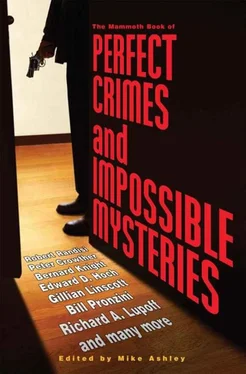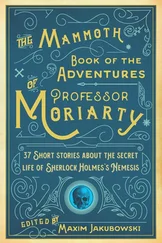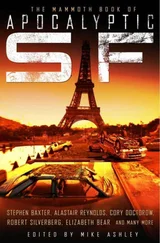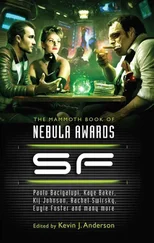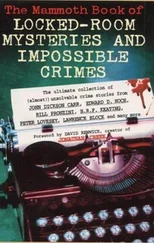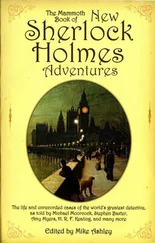“Look at the walls,” said Rackham, making no attempt to hide the anger and contempt in his voice. “There are cracks in the concrete due to water seepage and not enough support in the foundation. We’ve got mice in the basement and bats make their nests in the roof.”
“Bats?”
“Bats,” repeated Rackham. “Concrete walls are nice and dry, better than most caves. Drive by this complex at night and you’ll think you’re in Transylvania.”
Bats, plague, ebola germs, monkey brain surgeries, electrodes, and a building called The Slab. I was starting to feel like I had walked into a bad horror movie. I looked down at the floor. The outline of a body had been drawn in front of the monkey cages in blue chalk. It served as the last testament to Dr Carl Schneider.
The professor, his degree being in neurobiology, had been found the morning before when his assistant entered the lab. Schneider was slumped in front of the cages, with one door open and a monkey sitting on the nearby lab table chattering at the cold corpse. The researcher had been working on a hush-hush project involving monkeys and incurable motor function diseases, and he had spent the night in the lab. He had been alone when the slabs locked him in, and there was no record of the concrete blocks moving during the night. In effect, the scientist had been sealed inside a concrete box. Nobody came in, and nobody left.
All the physical evidence pointed to Schneider having just taken the beast out of the cage when a heart attack dropped him down. Both hands occupied with the scrambling monkey, the doctor never had a chance to grab for the phone and call for help. Everything suggested that Schneider had unfortunately suffered from sudden cardiac arrest and died in an instant.
There was no sign of a struggle. No wounds on his body, not even a scratch. The food and drink in the refrigerator had been tested and no poison detected. Gas was similarly ruled out, as polluting the air supply would have killed the monkeys in the lab as well as the doctor. Even the autopsy results pointed to a killer heart attack.
Why then the frantic call to Penelope Peters and my presence in the lab the next day? Because Dr Carl Schneider was thirty-one years old, was in near perfect health and, as far as anyone could tell, didn’t have a bad habit in the world. People like that don’t usually die from heart attacks.
“Any phone calls?” I asked, knowing the answer.
“Neither incoming or outgoing,” said Rackham. “Phone system works fine, in case you’re wondering. We checked it immediately after finding the body. He obviously died before he could contact the front desk. Not that it would have mattered. Once this place is sealed, it stays that way till morning.”
I walked around the lab, stared at the concrete walls, noted the tiny holes near the top. Big enough for a spider to crawl through, not much more. Attacked by a baby bat, I wondered, then dismissed the idea as beyond belief. A poisonous insect, perhaps? I was reading too many spy novels.
“Any chance the project he was working on caused his death?”
“No,” said Rackham. “Anything that would kill a man would kill all the monkeys in the lab. And they’re still alive.”
Definitely. The beasts screamed continually as I prowled around, trying to look like I knew what I was doing. Bright lights and screaming monkeys, it was enough to drive a man to drink. But murder? I couldn’t see how.
“Could he have been scared to death?” I asked, knowing how preposterous the idea sounded. “Was Schneider afraid of bugs? Maybe the janitor drew invisible paintings on the wall that could only be seen when the lights were turned off?”
Rackham snorted. “Dr Schneider was the most rational person I ever met. He had absolutely no imagination. Not the type to be scared by invisible ink. Besides, all of the maintenance crews are Marines with top-secret clearance. Plus the lights in this lab are never shut off.”
On the wall over the desk was an award paper in a gold frame. The paper indicated that Schneider had won a prestigious science award and $100,000 prize only last year. A framed photo of a skinny, pale white man with thinning brown hair dressed in a bathing suit standing next to an equally pale blond woman wearing a modest two-piece outfit rested alone on the desk. Some words were scribbled on the bottom of the picture.
“That Schneider?” I asked.
“The one and only,” said Rackham. “With Professor Mary Winfree, from the plague lab, down one floor.”
“To Carl, with lots of love, Mary.” It sounded like the possibility of a motive to me. Love, as the song said, changes everything. “Let’s go visit Professor Winfree.”
If Schneider’s lab was Monkeyland, then Winfree’s domain was obviously Mouseville. The lady professor’s laboratory was one floor down from the murder scene and was arranged in much the same layout as the room above. Cages to the rear, scientific equipment of all sorts to the left, minimal living comforts to the right. When we entered the lab, Winfree was examining a slide under a microscope while in the rear two assistants in white coats were feeding the mice. The professor peered at us with wide blue-gray eyes. “Can I help you gentlemen? This is a restricted area.”
“This whole building is a restricted area, Professor,” said Rackham. “We all know that. I’m Captain Rackham, and this is Mr O’Brien. We’re investigating Dr Schneider’s death.”
“Oh, yes,” said Winfree, a faint blush rising in her cheeks. “Carl’s death. So unfortunate. Investigating? I don’t understand. I thought he died of natural causes?”
“A heart attack at thirty-one?” I asked. “Rather young for heart disease, don’t you think?”
Winfree stood up, her fingers fluttering. She looked like she was ready to fly away. “I – I never considered that. But why question me? Carl and I weren’t close. The last time I spoke with him was a week ago.”
“There was a photo on his desk,” I said. “Signed by you, with lots of love?”
The professor giggled, a high-pitched sound that startled the mice in the rear of the lab, which began squeaking. “A brief flirtation at the beach last summer. A few weeks in the sun. Surely not a reason for foul play. Carl and I were still fond of each other. Sometimes we even talked about going on another trip, but it never amounted to much. That’s because neither of us was willing to abandon our first love.”
“First love?” I asked.
“Our work, of course.”
“Right,” I replied. “Anyone you suspect other than terrorists or PETA activists who would have wanted to harm Dr Schneider? Angry relatives, old girlfriends?”
“No-o-o,” said Winfree, drawing the word out the length of a sentence. “Carl didn’t associate with people outside of the complex. None of us do. We’re devoted to our work. It’s our life.”
I nodded. Obsessed. Great for the country, bad for a murder investigation.
“I wasn’t even here the other night,” continued Winfree. “I was giving a lecture at the university. You should ask Otto if anything strange happened. He’s always around.”
We left Professor Winfree after a few more questions. If she was guilty of murdering Schneider, then I was a monkey’s uncle. Though, I’ve been wrong before. Plenty of times.
“Who’s Otto?” I asked.
“First floor,” said Rackham. “Otto Klax, Professor of Neurobiology, the man in charge of our MEMS program.” Rackham sighed. “Another genius with underdeveloped social skills. At least he doesn’t work with lab animals. Not enough room in his lab for anything other than him and his ego.”
MEMS referred to mechanical components on the micrometer size and included 3D lithographic features of various geometries. They were made using planar processing similar to semiconductor processes such as surface micromachining. Devices using them ranged in size from a millionth of a meter to a thousandth of a meter. Too small to even imagine, yet they were the hottest item in military circles. I noted that both Schneider and Klax were neurobiologists, yet while Schneider concentrated on the brain, Klax’s focus was on MEMS. “Why would a neurobiologist be working with MEMS?” I asked Rackham.
Читать дальше
